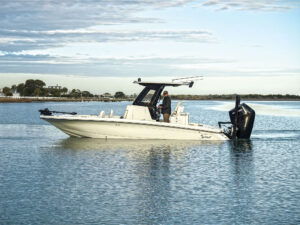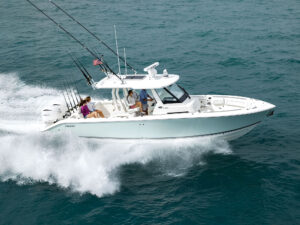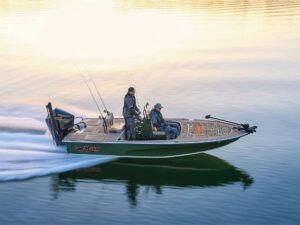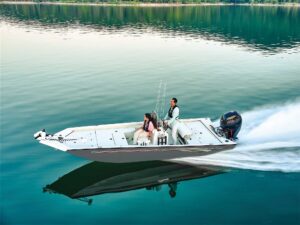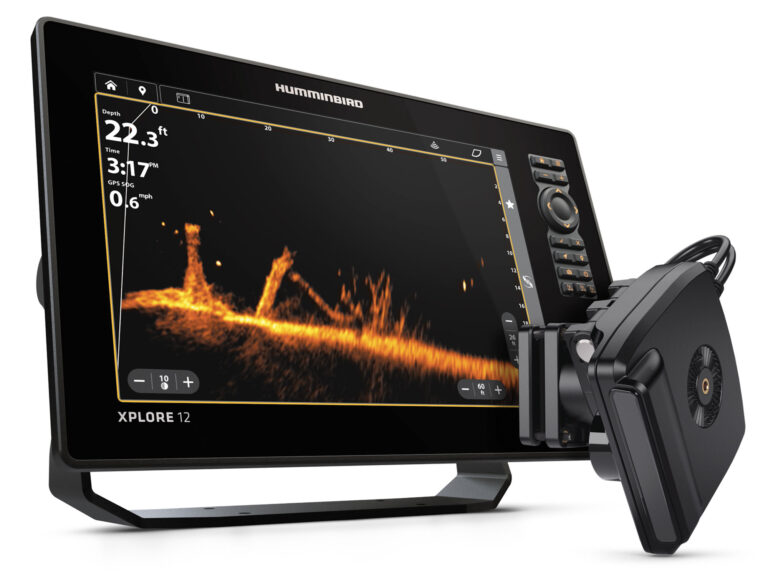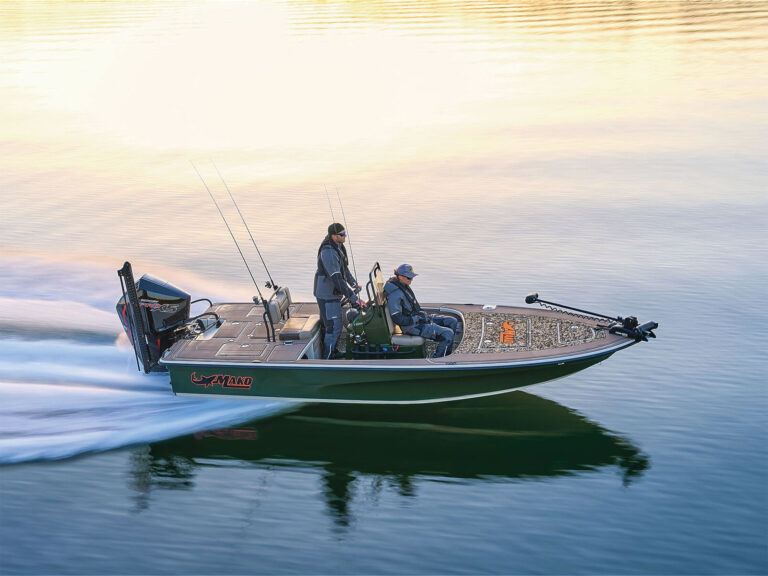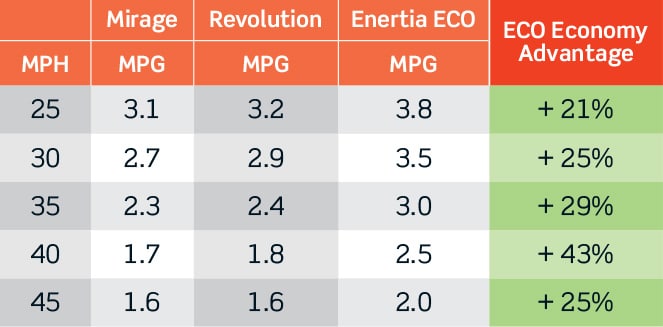
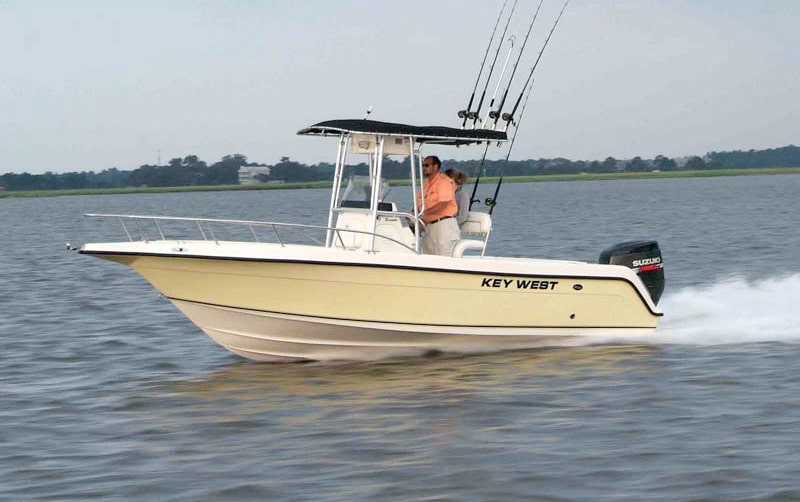
Engine: 300 hp Mercury Verado 300 gasoline outboard
Prop: Mercury Mirage Plus 15¼” x 19″ 3-blade stainless steel
Prop: Mercury Revolution 4 14.625″ x 19″ 4-blade stainless-steel
Prop: Mercury Enertia ECO 16″ x 19″ 3-blade stainless steel
Gear Ratio: 1.85:1
Fuel Load: 140 gal.
Crew Weight: 570 lb. plus 600 lb. ballast forward of console Key West 2300 Blue Water
LOA: 23’4″
Beam: 8’6″
Draft (max): 1’3″
Displacement (approx.): 2,800 lb.
Transom Deadrise: 21 degrees
Fuel Capacity: 140 gal.
Max Horsepower: 300
keywestboatsinc.com
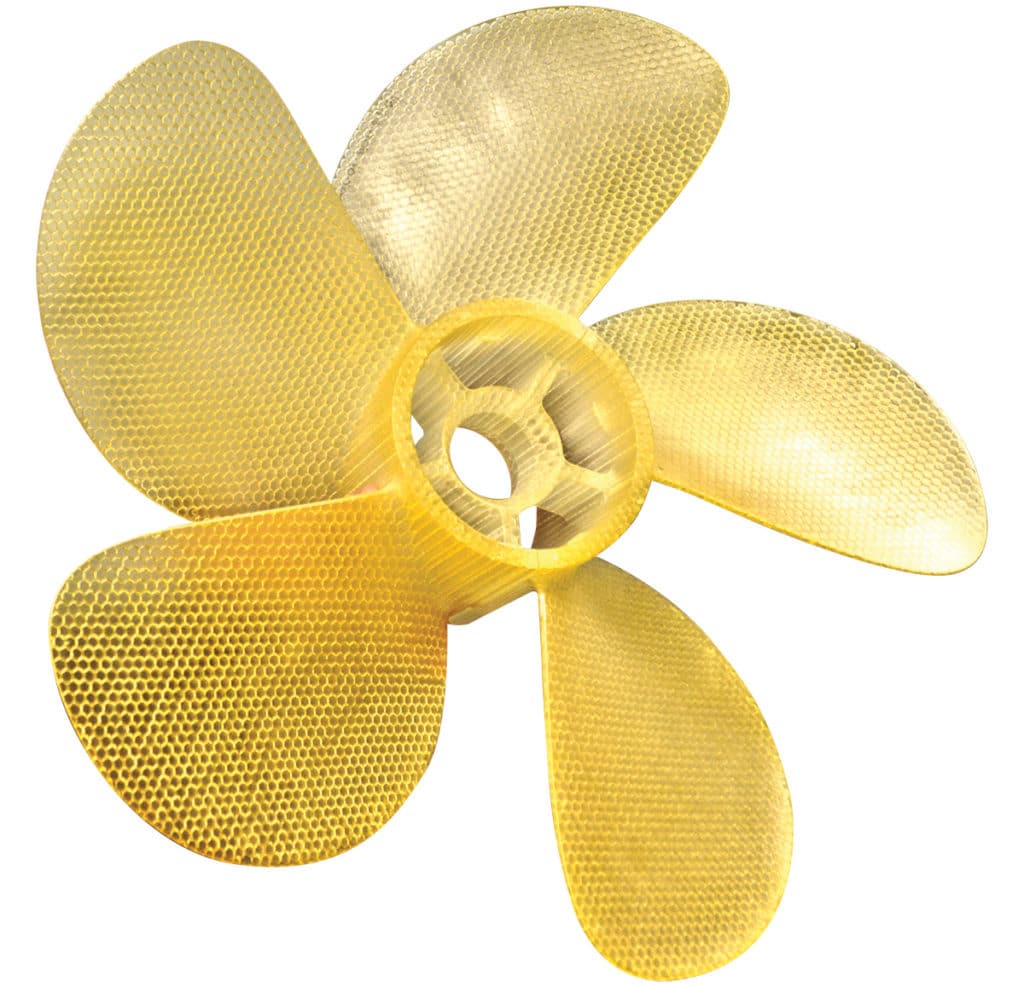
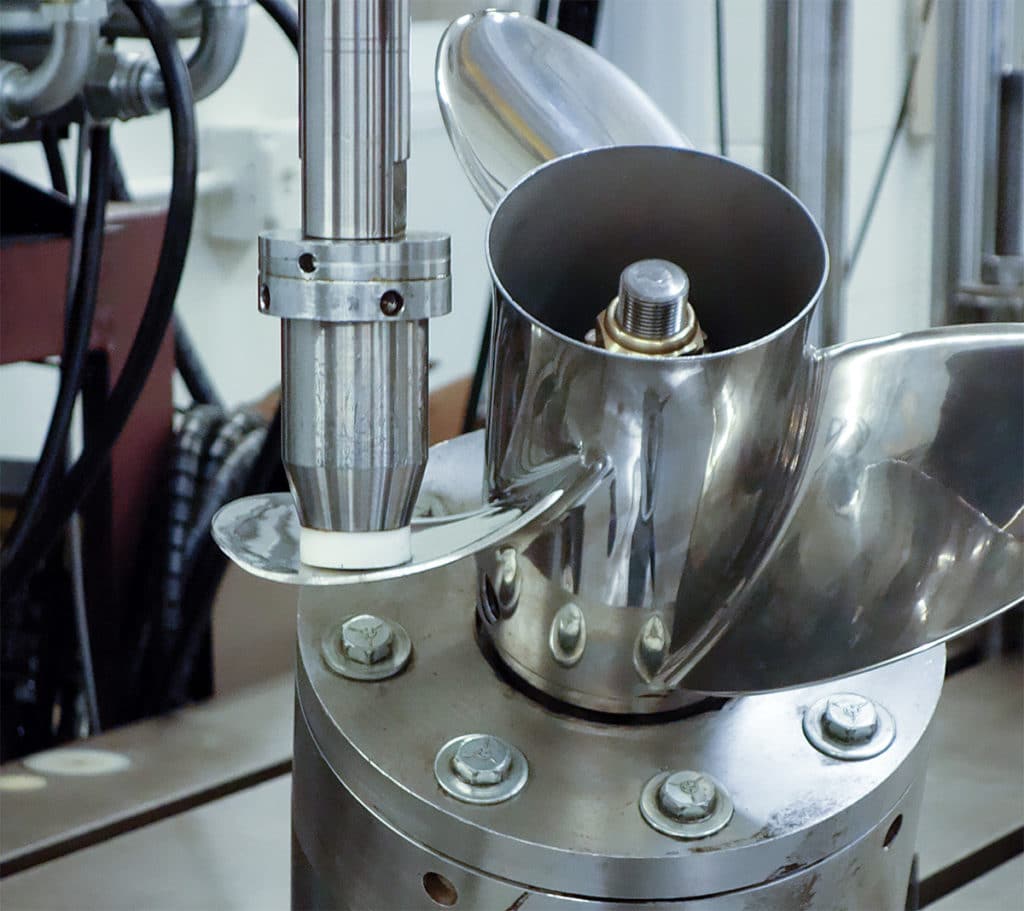
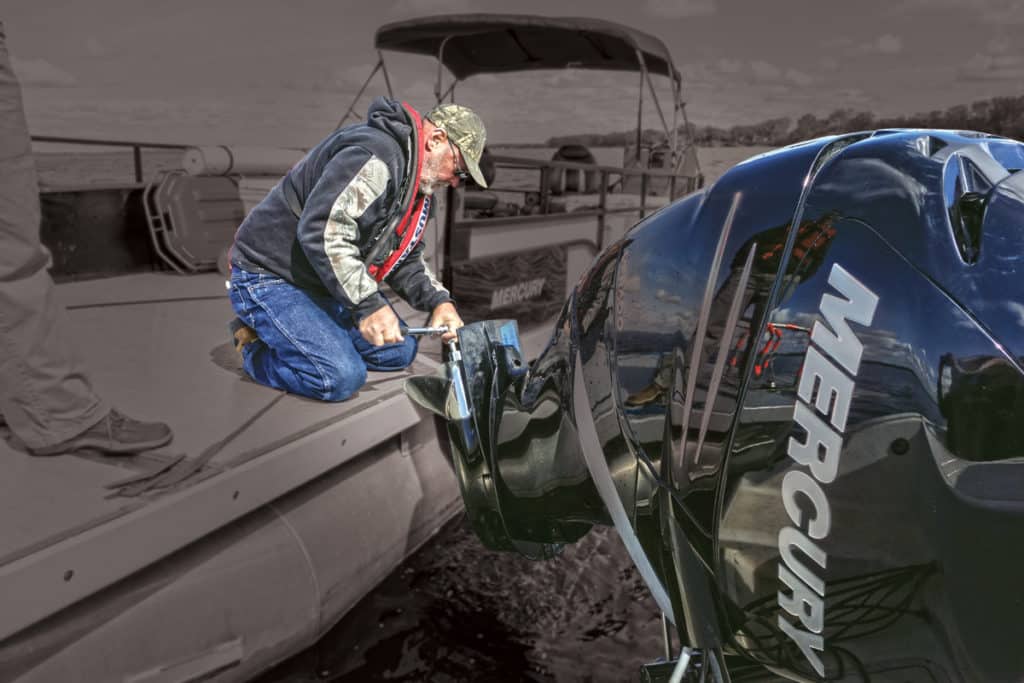
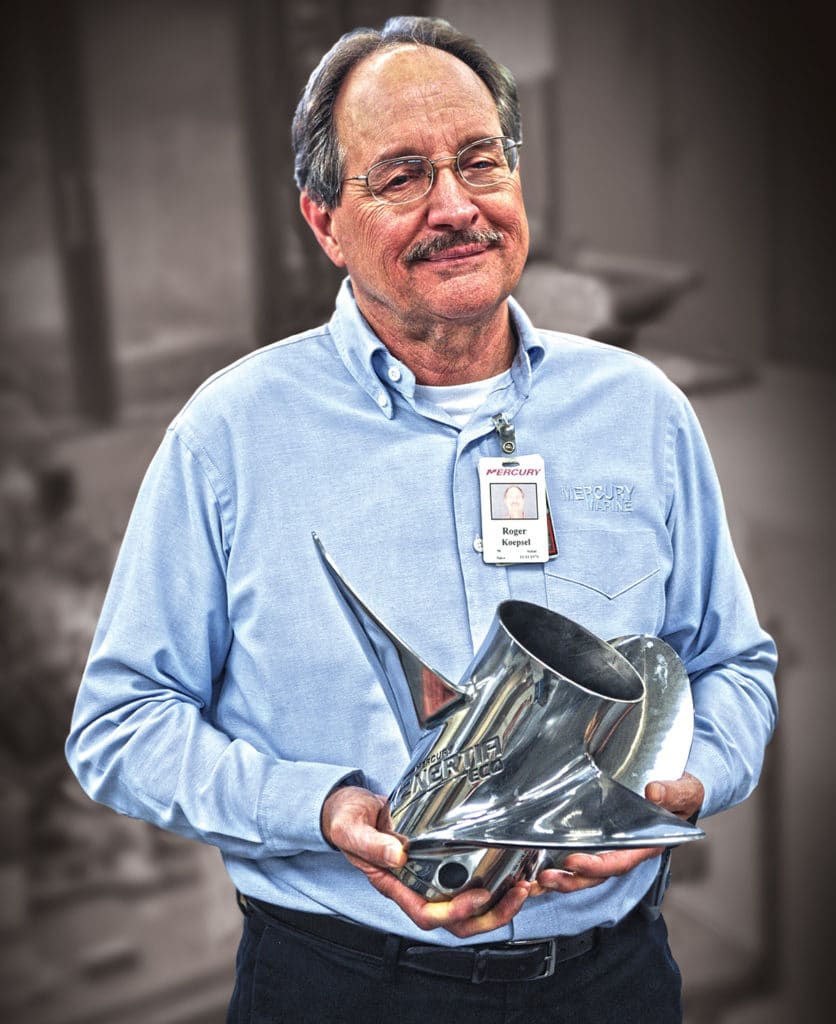
Would you pay $795 to improve the fuel economy and range of your boat by 10 percent? What if I offered you 20 percent better economy, or even more? You do the math. But $795 is what it will cost to slip a Mercury Enertia ECO onto your prop shaft, and 10 percent is what Mercury says you’ll save on fuel. If this sounds too much like the magic carburetor you once read about in Popular Mechanics, well, we were also skeptical. But we are skeptical no longer. We’ve tested the Enertia ECO, and it works as promised. Way better than promised, in fact.
Here’s the bottom line: Testing on a Key West 2300 Blue Water rigged with a Mercury Verado 300 outboard, between 25 and 45 mph, the Enertia ECO delivered 28.6 percent better average fuel economy than the popular Mercury Mirage Plus and Revolution 4 propellers. With no loss in top speed. As the guy says on TV, it really, really works!
Now here’s the disclaimer — your results may vary. Every boat-and-motor combination is different, from the way water flows off the hull surface to the running angle to the lift it produces, and on and on with the variables. The combination of those variables will dictate how the ECO, or any other propeller, performs on your boat. But we think the ECO has the potential to significantly improve the economy of many boats, especially Verado outboard-powered boats in the offshore angling segment it was originally designed to service.
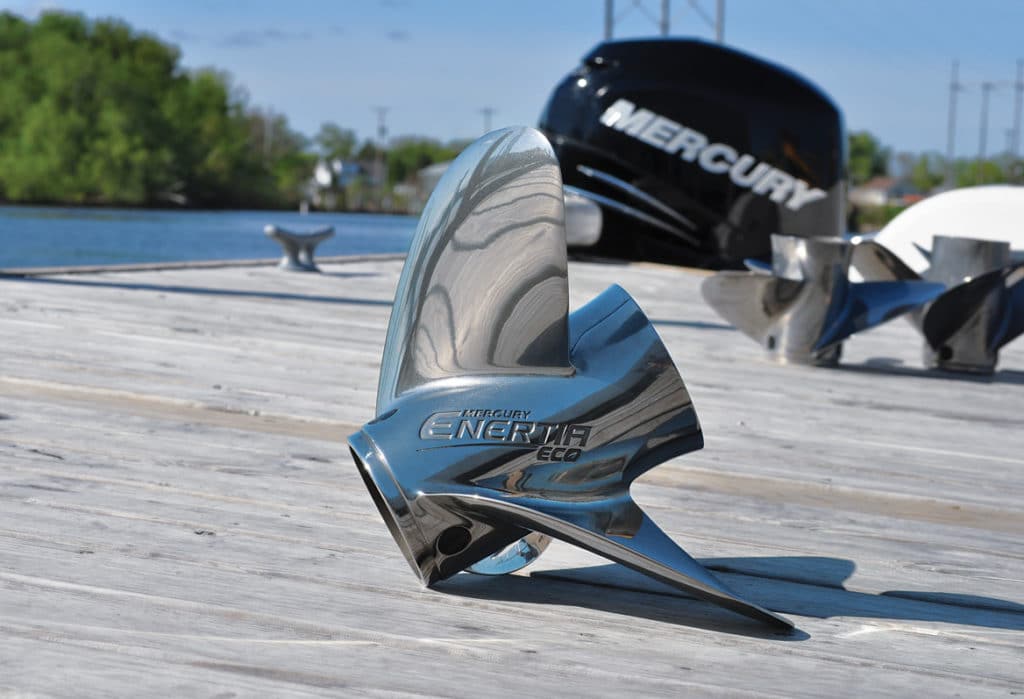
You Asked For It
The Enertia ECO represents customer-led product development. In conversations at the 2012 Miami International Boat Show, customers asked Mercury what it could do to improve the fuel economy of multiengine offshore fishing rigs powered by Verado outboards. These anglers wanted either more range or to save money at the fuel dock. They told Mercury they’d sacrifice top speed to gain that economy.
“We were talking to offshore anglers who run 500 to 700 hours a season,” said Mercury Propeller brand manager Jared Reichenberger. “To them, 10 percent better fuel economy works out to a savings of $500 to $600 for every 100 hours they are on the water. The original focus of the ECO was on these anglers running Verado 300 and Verado 250 outboards.”
The job to create this prop landed with Roger Koepsel, lead propeller engineer at Mercury Marine. Koepsel came to Mercury straight out of the esteemed aeronautical engineering program at Wichita State University — in 1970. His 44 years of institutional knowledge combined with the latest computing and design tools give Mercury a formidable advantage in prop development.
“This was an unusual assignment,” Koepsel explained. “Understand that Mercury has always been rooted in performance. In the past, almost every prop we’ve designed was optimized for top speed. This request was for a prop that could deliver 10 percent better midrange economy, and we could sacrifice 5 percent top speed to get there. Nobody’s ever asked us to build a prop that was slower.”
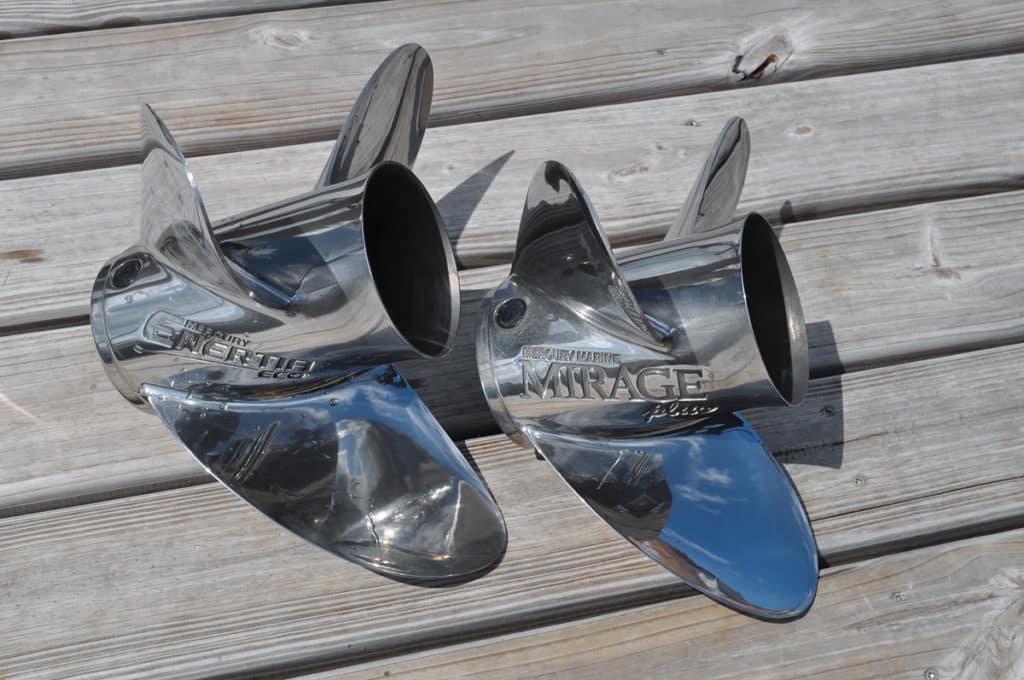
To enhance midrange efficiency, Koepsel maximized blade diameter and rake. The 16-inch diameter of the ECO is all that will fit on the Verado gear case. Koepsel said even a little more diameter would be ideal. For comparison, the standard Enertia prop line is 14.5 inches or less in diameter. The most popular props in this application, the Mirage Plus (15.25 inches) and Revolution 4 (14.625 inches), are also smaller in diameter. The progressive rake of the ECO increases from 20 degrees to 40 degrees from blade root to tip, Koepsel said, a rate he calls “radical” and 25 percent more rake than even the Revolution 4. The goal of this design, he explained, was to increase efficiency by lifting the hull to reduce drag in the water.
“Increasing diameter and rake usually has a negative impact on hole shot,” Koepsel said. “It just takes more torque to get the boat moving. But we calculated that the supercharged Verado 300 has a torque curve that would be a good match for this prop design.”
When I first met Koepsel in the late 1980s, he was trying to write his own propeller design software, and initial blade shapes were formed in wood and wax and then cast as a prototype. Today, complex software and computer-aided design, combined with fast prototyping materials, has made the design process faster and more precise. The ECO is cast in the same proprietary, fatigue-resistant X7 stainless-steel alloy developed for the original Enertia and Fury prop models.
“Today’s computing tools can create blade shapes that we could not even calculate when I started in this business,” Koepsel said. “We can get pretty close with an initial design these days, but testing on the water is still full of surprises. We are working in a very complicated environment.”
Koepsel said it took about 18 months to design and test the Enertia ECO prop. The prop was initially offered in March 2014 with 19-, 21- and 23-inch pitch sizes, with the 19 and 21 expected to offer the most sales volume.
“A boat fast enough to run a 23 often has a step hull that doesn’t respond well to the lift of the ECO,” Koepsel said. A 17-pitch ECO arrived in late 2014. The production ECO prop is fitted with hub vents so it can be tuned for use with two-stroke outboards. The vents should be plugged when rigging it on a Verado.
Mercury marketing materials claim the ECO delivers 10 percent better economy, but Reichenberger said gains of 15 to 20 percent are not uncommon. The biggest surprise is that Koepsel delivered that economy with no sacrifice in acceleration or top speed in most applications.
No Comparison
Our testing, which was conducted at the Mercury test facility in Oshkosh, Wisconsin, was more comprehensive than our normal boat testing. We focused on planing speed, from 3,000 to 5,500 rpm. The boat load was heavy, and fuel use was measured with a very accurate flow meter that logged data directly to an onboard computer. At each 250 rpm increment we logged fuel use four times, with each measurement lasting 20 seconds. The computer then averaged that data. All economy testing was done with the motor set at “level trim” — that is with the prop shaft horizontal, using marks actually painted on the motor bracket. This eliminates the human variable of trim and places each prop in the same state on the boat for an accurate comparison. Our fuel economy may actually have been better if we’d trimmed the motor out. We also averaged six passes at wide-open throttle with each prop, and in that case trimmed for best speed. For comparison, we chose the three-blade Mirage Plus ($648) and the four-blade Revolution 4 ($735) propellers, which Mercury says are the most-popular choices in this application.
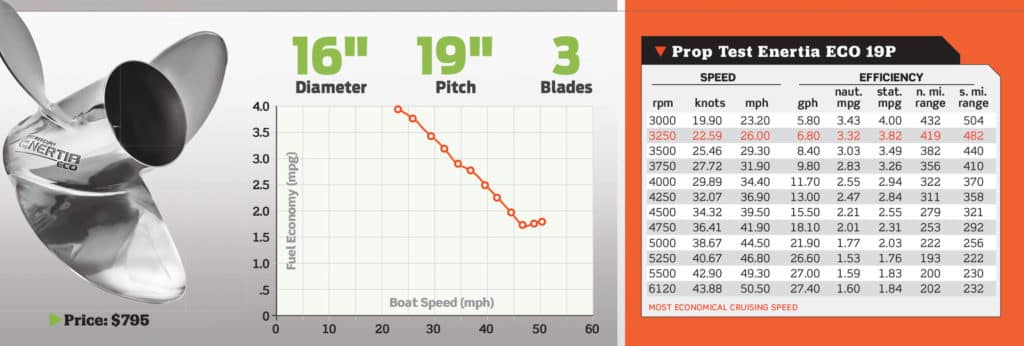
When I got home and crunched the numbers, the results were almost astonishing. The fuel-economy gain delivered by the ECO prop ranged from 21 percent (3.15 to 3.8 mpg) at 25 mph to an eye-popping 43 percent (1.75 to 2.5 mpg) at 40 mph. Across the range, we logged 28.6 percent better fuel economy with the ECO, and at 50.5 mph the ECO matched the top speed of the Rev 4 and was 1.7 mph faster than the Mirage. Underway, I could feel the ECO working — the boat running a little higher in the water, making a little less spray. And note the boat speed at our initial 3,000 rpm data point: 23.2 mph for the ECO, while the Mirage ran 13.6 mph and the Rev 4 17.9 mph. With the ECO, we could hold a smart planing speed at much lower rpm.
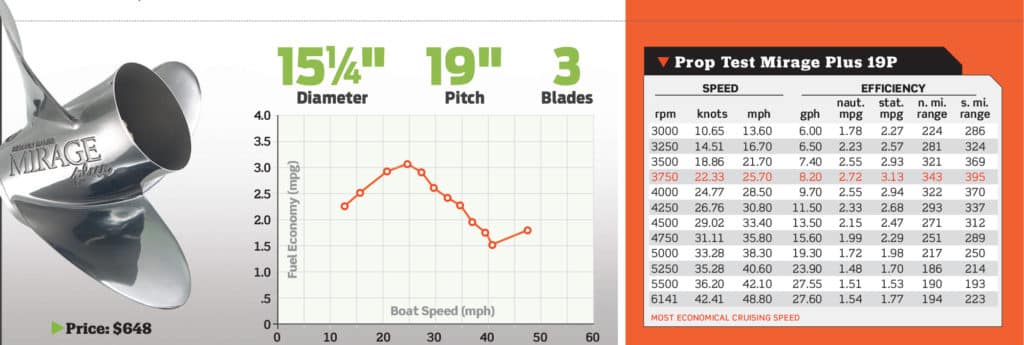
I was concerned, however, that our single-engine test boat was not representative of the market that demanded the ECO prop in the first place. So for another perspective, I spoke to Alden Thornton, sales manager at Nor-Tech Boats. Thornton runs a Nor-Tech 392 Super Fish with quad Verado 300 outboards, a 14,000-pound boat he typically loads with 600 gallons of fuel and 3,000 pounds of ice for a 200-nautical-mile run offshore. Thornton has a background in high performance (he’s raced and previously worked at Fountain) and says he conducted a careful test.
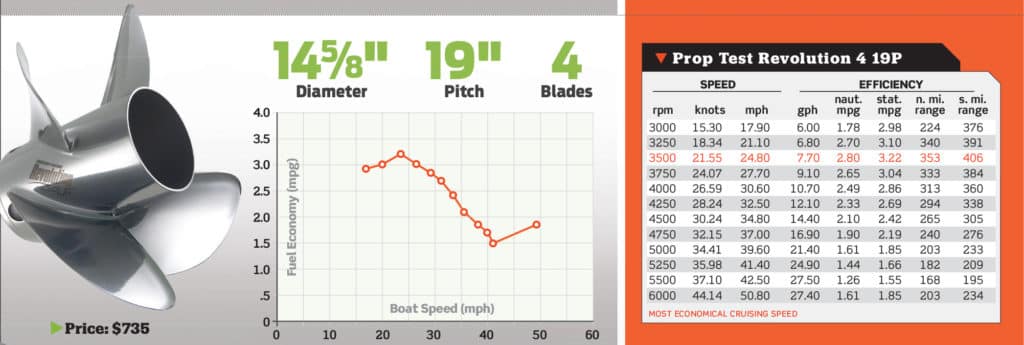
“I’m seeing 15 to 17 percent better economy at 4,300 rpm, my best cruise speed,” Thornton said. “And we gained 1.5 mph in top speed. This boat will still run 72 mph loaded. As far as I’m concerned the Mirage and Rev 4 are old technology. This ECO was made to push a heavy load. The only time I lose that economy is when sea conditions force me to run trimmed down.”
The Enertia ECO is better than a magic carburetor. It really works. Once again, how well it works depends on the boat/motor combination it’s pushing. But if your boat is giving you gas pains, the Enertia ECO prop could be the relief you’re looking for.

